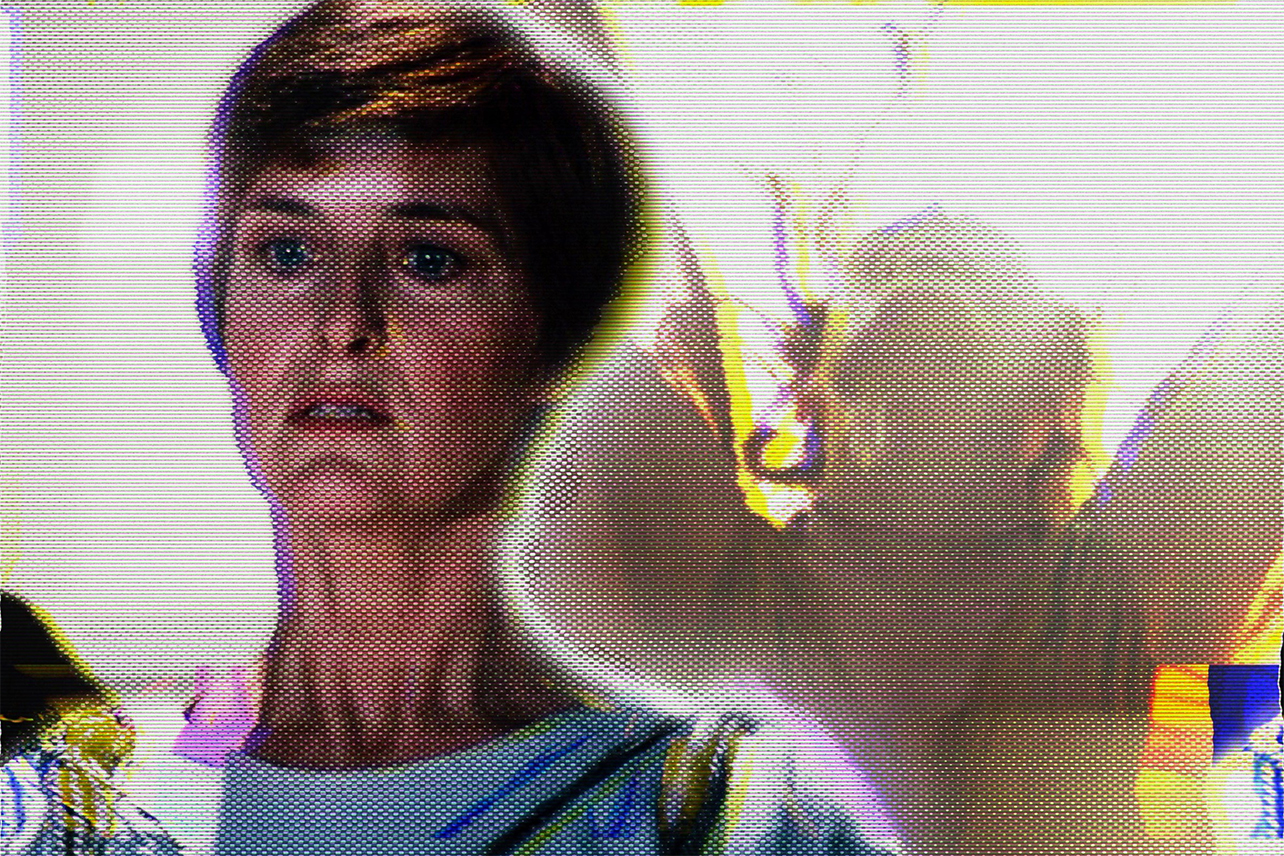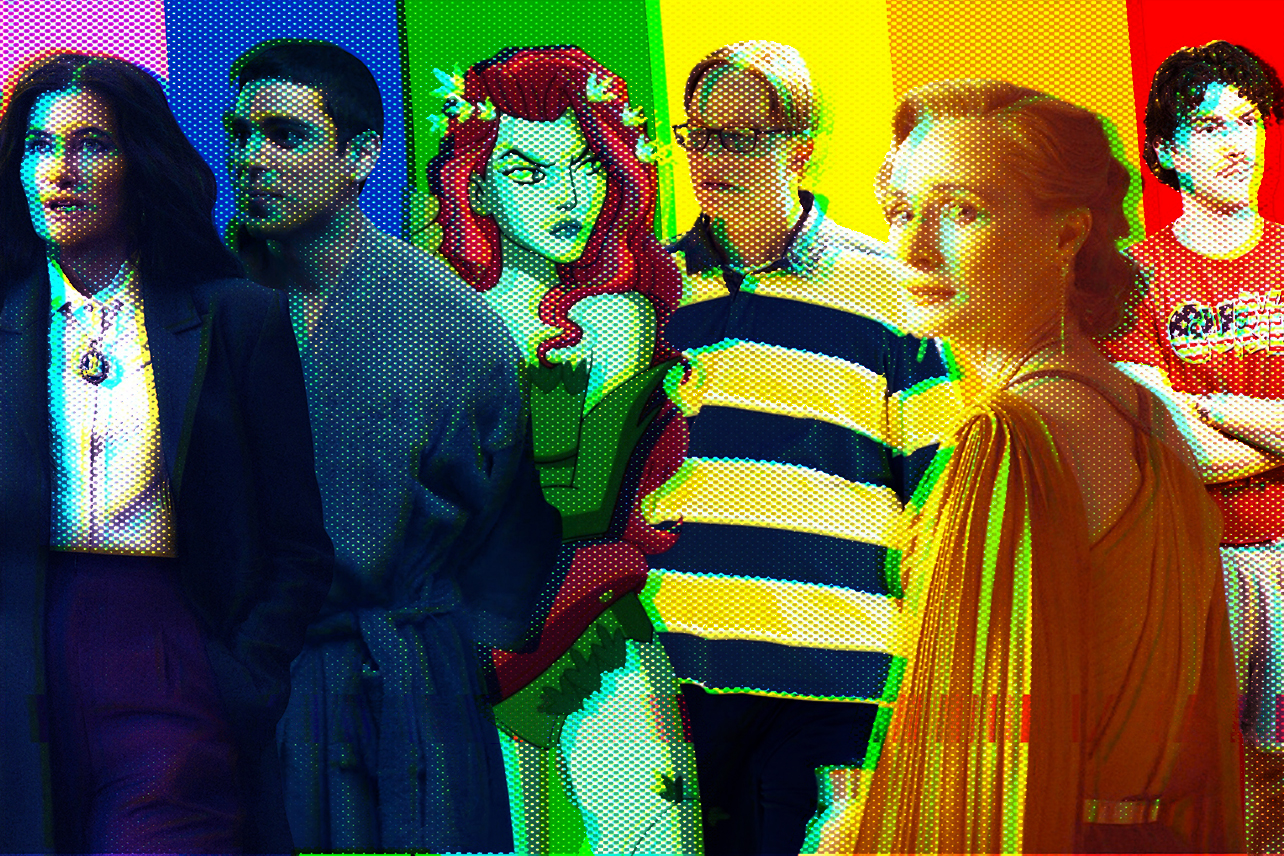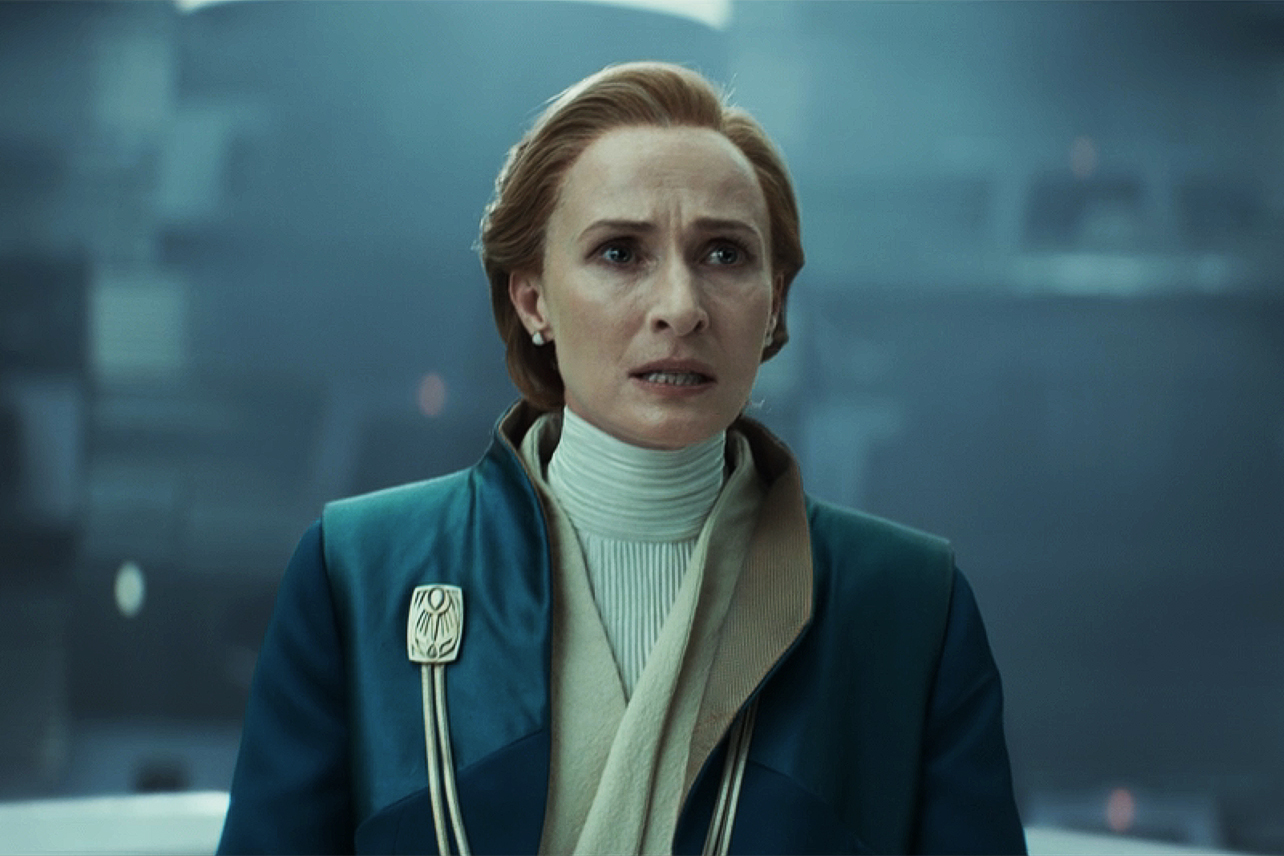Mon Mothma has always been a captivating character. Granted, I'm both a Star Wars lifer and a homosexual; I was bound to be drawn to any strong female character when I first watched Return of the Jedi at the age of six. But whatever — whether you first saw Mon Mothma on the big screen in 1983, via a browser window open to Disney+ in the 2020s, or via a fullscreen CBS/FOX VHS tape in 1991 like me, she probably left an impression on you.
Standing on the bridge of the Rebel fleet's flagship cruiser, Mon Mothma immediately cut a strong, stately, striking figure. The no-nonsense haircut and sharp jawline contrasted with her swanlike neck and regal robes, as white as the snow on Hoth — without any introduction and zero fanfare, you immediately knew that this woman was in charge.
This is due in no small part to Caroline Blakiston's performance. Come on — imagine walking onto the set of the third film in cinema's biggest franchise and being told to deliver the line "many Bothans died to bring us this information" with all the emotional heft of Oppenheimer saying, "I am become Death." The look in Blakiston's eyes after that line is haunting.
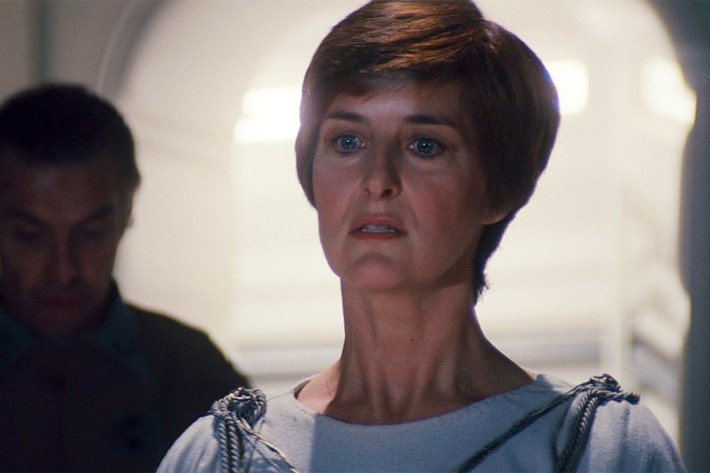
There is a whole prestige miniseries shrouded in that look (one I am certain we will eventually see).
Even though her one speech only lasts 42 seconds, and her total screentime barely passes a minute, I always remembered Mon Mothma. We all did. She was the second most prominent woman in the entire Rebellion, between Princess Leia and Toryn Farr. Yes, the original trilogy absolutely had a gender parity problem.
But all that said — this is why Andor is not only a great show, but it's also emblematic of what is so great about Star Wars in particular. Through an electric synergy of writing, direction, performance, costume design, hair and makeup, and editing, those 42 seconds of Return of the Jedi introduced a character with what felt like a fully-formed personality and backstory — even if that personality and backstory existed strictly as an implication. The text was rich, but the subtext was richer.
And now we have Andor — and specifically Genevieve O'Reilly — taking that subtext, examining that subtext, and exploding it.
Let's talk about that Mon Mothma dance number.
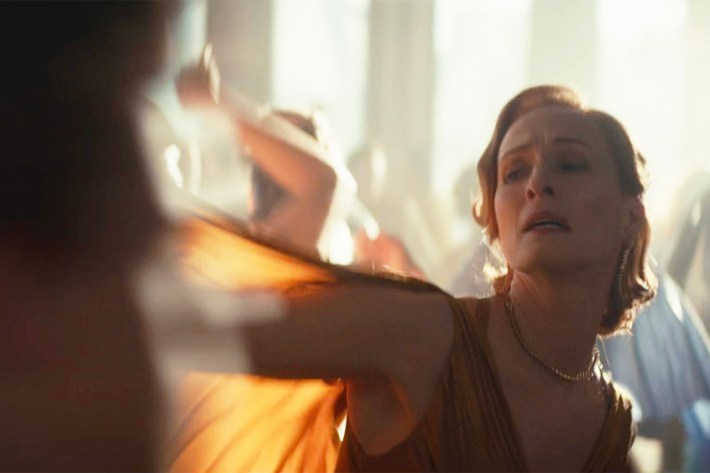
There's a sentence that absolutely no Star Wars fan has ever strung together before the release of Andor Season 2. Now that dance sequence — a furious existential twirl-wind on Mon's Fabergé home-world of Chandrila — is rapidly becoming as synonymous with the character as her "many Bothans" speech. These two halves, a stone-faced rundown of a battle plan and a mother-of-the-bride dance-floor freakout, come together to form the new whole of a character, a character that fans first met 42 years ago.
And what's beautiful about it — again, what makes Star Wars such a special franchise — is how harmonious these two seemingly discordant notes sound when played together. Watching Mon Mothma's struggle maintaining a hold on order in the Imperial Senate in Andor Season 1, and now seeing her family in a moral crisis masquerading as traditional values, it enriches the character — now and then.
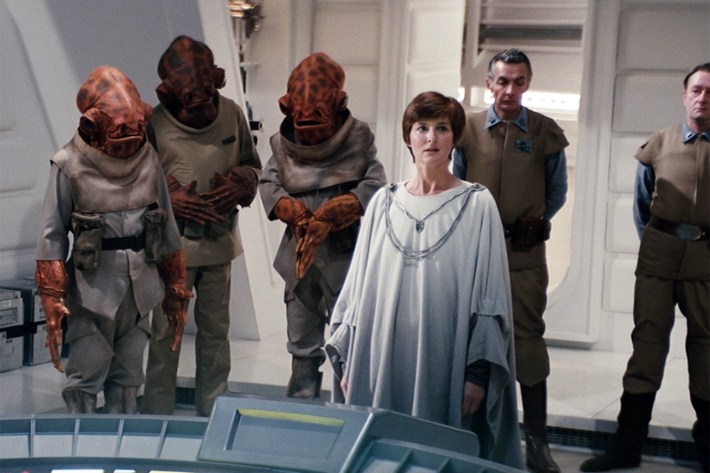
This storytelling trick, by the way, always been Star Wars' ace in the hole. When George Lucas dropped audiences into a galaxy far, far away, he intentionally started the story in media res, dropping all sorts of references and inferences along the way without any certainty that he would ever be able to expand or expound upon any of them. It worked, though, because the core of the story was so strong (and so familiar; George loved his Joseph Campbell!). Stray references to the Clone Wars and Ord Mantell and, yes, all those Bothans weren't confusing so much as tantalizing. And if later writers ever wanted to follow any of those bread crumbs, they could.
Fortunately for Mon Mothma, an admittedly minor character most known for her robe and the phrase "many Bothans," her backstory gets to unfold via Tony Gilroy and the team behind Andor, with O'Reilly comfortably — and commandingly — in the role. When Mon Mothma talks about all the Bothans that died and gives that fleeting thousand yard stare, we now have an idea of what sacrifices Mon has not only witnessed as a founder of the Rebellion, but also the ones she's personally endured.
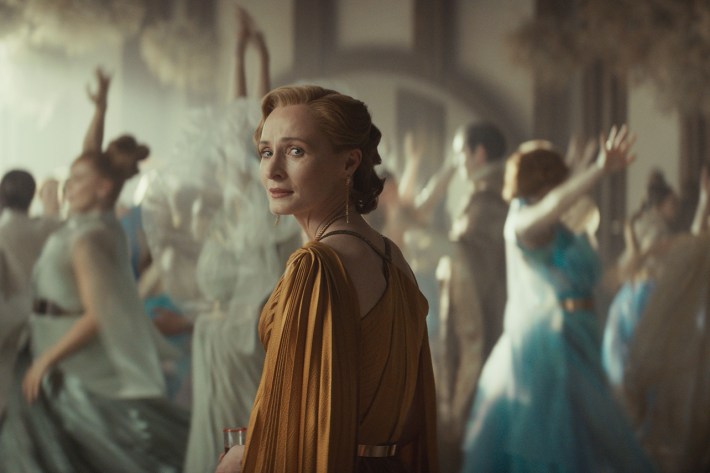
In the first three episodes of Andor Season 2, she bids adieu to her teenage daughter she's lost to religious conservatism, one following the trail that Mon loathes having blazed herself with her own arranged teenage marriage. And she sacrifices Tay Kolma, her oldest friend turned greatest liability — and perhaps her actual soulmate, should she have been afforded a secular path to travel as a child.
And then there's her other defining characteristic, the robe she wears on the bridge of Home One in Return of the Jedi, so crisp and comparatively utilitarian. Compare that to the eleganza she serves in Andor, courtesy of costume designer Michael Wilkinson. Those aren't robes. Those are gowns. There's not a bit of athleisure in Mon's closet. Everything she wears is a banger worthy of the Met Gala.
But, as necessitated Mon's role in the nascent Rebellion, the glamour masks the increasing ruthlessness of her actions. The wedding reception marks a turning point for the character, with the grip of the Empire tightening and her own handle on her personal life slipping. All that fabric, so elegant, becomes caught up in her hurricane-force emotions. Elegance be damned on the dance floor.
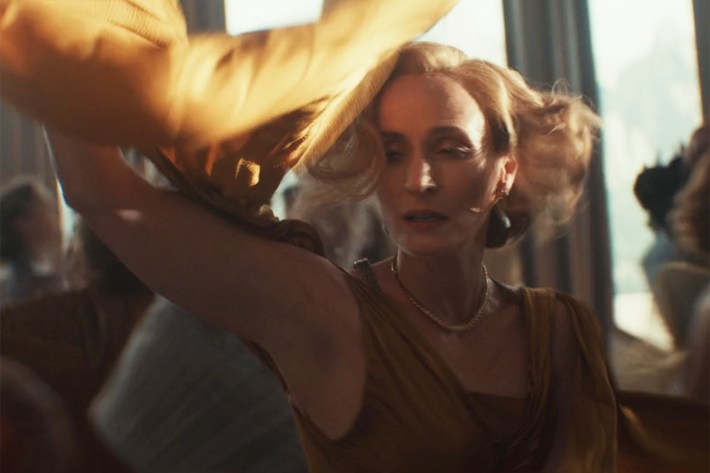
By the time of Return of the Jedi, she hasn't lost her regal flair. There's a bit of pageantry to her presence; you don't see Admiral Ackbar or General Madine in robes. But there's no glitz, no pomp. She shook all that off years ago.
Now, when we all rewatch that one speech in Return of the Jedi, I think we will forever recall the closing scene from Andor's "Harvest." I think those two are now linked, the two definitive Mon Mothma scenes (so far, at least; Season 2 just started!). And that compare and contrast, that's who Mon Mothma is. We now know what Mon Mothma had: a picture-perfect family, a job that made her powerful and famous, and a historic family estate on the most affluent, White Lotus-y planet in all of the galaxy. And we know where Mon Mothma ends up: giving a stiff-upper-lip speech relaying the plans to destroy a planet-sized instrument of genocide. Finally, one of the franchise's best character arcs, fully realized after 40 years.
If you haven't already, consider supporting worker-owned media by subscribing to Pop Heist. We are ad-free and operating outside the algorithm, so all dollars go directly to paying the staff members and writers who make articles like this one possible.
